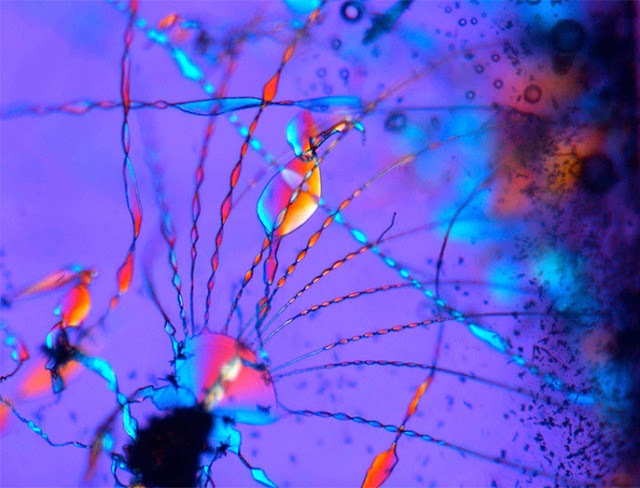

| Online: | |
| Visits: | |
| Stories: |

| Story Views | |
| Now: | |
| Last Hour: | |
| Last 24 Hours: | |
| Total: | |
Self Organizing Minerals and the Origin of Life
A team led by scientists from the Spanish National Research Council (CSIC) has confirmed that in natural alkaline waters characterised by a high pH, silica is capable of making complex self-assembling mineral structures. In the paper, which appears in the journal Science Advances, the team’s scientists suggest that silica-provoked self-organization would have been a common phenomenon on early Earth, as well as on planets like ours, where alkaline environments were widespread.
The scientists used water from the Ney Springs waters in California in the USA with pH values of over 10 to obtain -amongst other things- biomorphs: fully inorganic structures capable of assembling themselves. Their shape, texture and symmetry resemble that of living organisms, but to date they have only been obtained in a laboratory.
“We have discovered that, although not easily achieved, these fascinating inorganic mineral structures can also be obtained in natural alkaline waters. The conditions for the formation of these materials are really quite extreme. Today there are very few places in the world where water with these properties exists”, explains CSIC scientist, Juan Manuel García Ruiz, from the Andalusian Earth Sciences Institute (CSIC and the University of Granada), where biomorphs were discovered and named three decades ago.
Silica and carbonate biomorphs obtained in gel in the laboratory.

Credit: Juan Manuel García Ruiz
The “extremely high” pH values of the Ney waters are derived from serpentinization, a geological process known to generate abiotic organic molecules. “Waters of this type were widespread during the early stages of our planet’s formation, before life appeared, or when it was beginning”, says the CSIC scientist.
Specifically, the scientists have demonstrated three forms of mineral self-assembly. Firstly, biomorphs, which are formed by tiny particles of barium carbonate which grow with the help of silica. “They have no edges or angles, but rather smoothly curved surfaces. They are often indistinguishable from the characteristic forms of primitive organisms”, explains Garcia Ruiz.
Secondly, the scientists have obtained crystalline aggregates of calcium carbonate and amorphous silica, called mesocrystals, which mimic the complex textures of shells. And finally, they have also shown that another form of self-organization exists. This takes place in hollow tubes composed of hydrated metal silicate membranes. “These structures, known as ‘silica gardens’, are capable of catalysing prebiotic reactions derived from simple carbon molecules, such as formamide”, adds the CSIC researcher.
The results of the work may well be useful in the search for ancient life forms, both on Earth and on planets such as Mars. “Biomorphs have a similar morphology to the oldest remnants of life. Their chemical footprint is also similar, which indicates that mineral self-assembly could have played a significant role in the origins of life”, concludes Garcia Ruiz.
Source: http://www.ineffableisland.com/2017/03/self-organizing-minerals-and-origin-of.html


